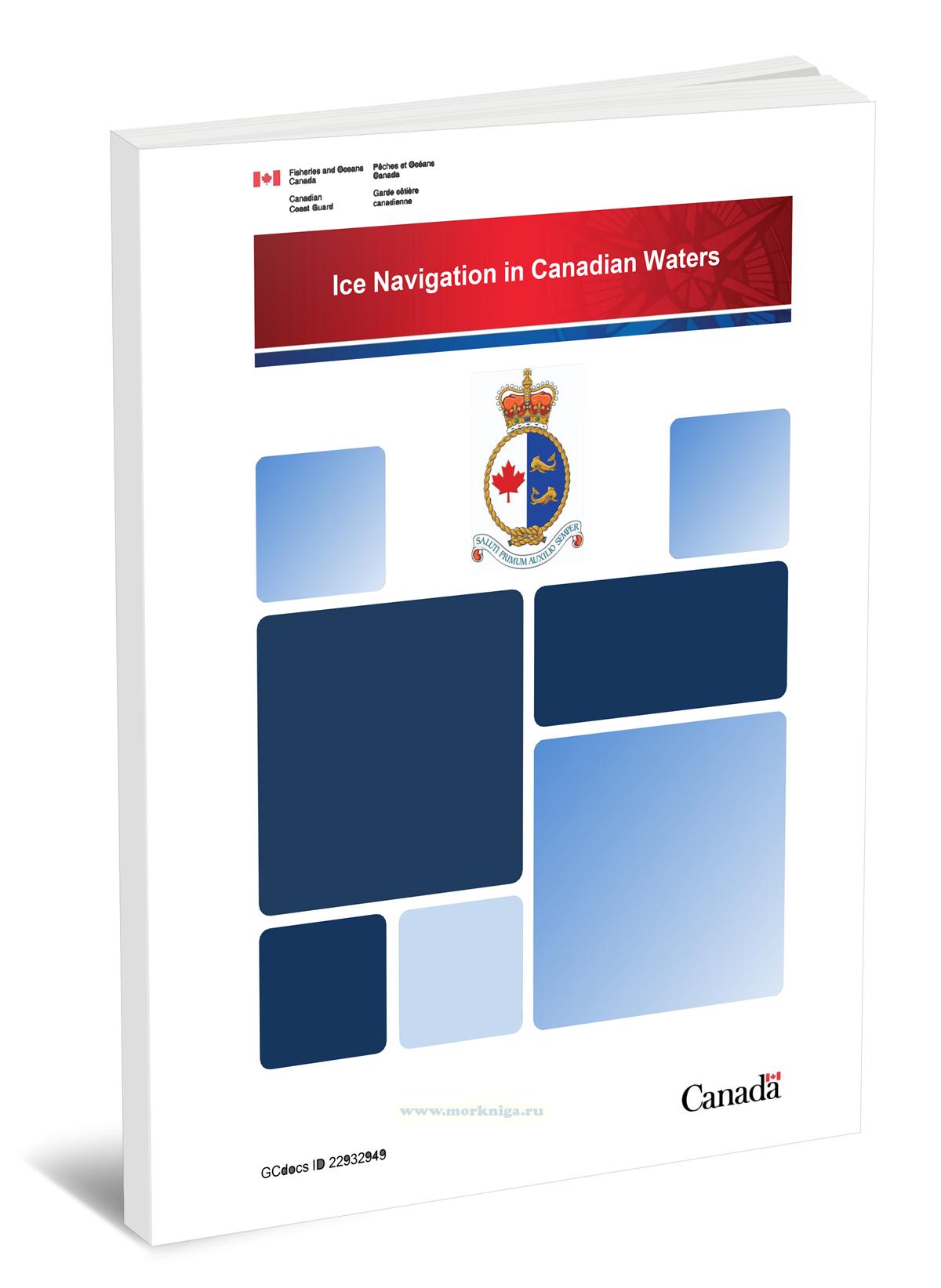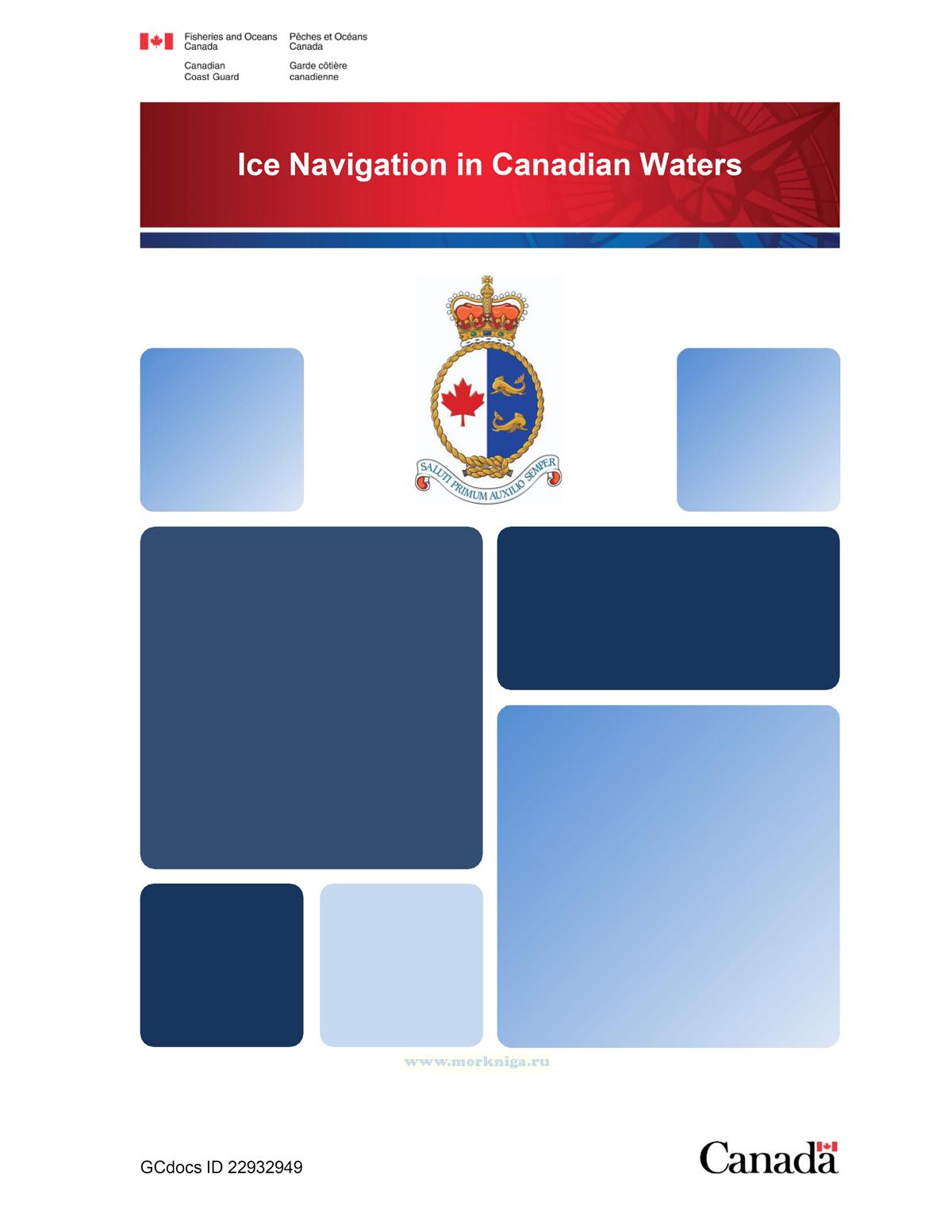Сб с 10 до 16
Ice Navigation in Canadian Waters/Ледовая навигация в канадских водах
Книга на ангийском языке
The publication is intended to assist vessels operating in ice in all Canadian waters, including the Arctic. This document will provide mariners of vessels transiting Canadian ice-covered waters with the necessary understanding of the regulations, shipping support services, hazards and navigation techniques in ice.
Contents
1 Icebreaking and Shipping Support Services
1.1 General.
1.2 Communications
1.3 Canadian Coast Guard Ice Operations Centres
1.4 Winter Navigation in Southern Canada
1.4.1 Reporting Requirements
1.4.2 Outside Gulf
1.4.3 Inside Gulf and St. Lawrence River
1.4.4 Iceberg limit information
1.4.5 St. Lawrence Seaway
1.4.6 Great Lakes.
1.5 Arctic Waters including Hudson Bay and Hudson Strait
1.5.1 Reporting requirements
1.5.2 Northern Canada Vessel Traffic Services Zone Regulations
1.6 Canadian Ice Service - Environment and Climate Change Canada
1.7 ECCC Storm Prediction Centres
1.7.1 Weather forecasts for marine areas
1.7.2 Weather charts for marine areas
1.8 METAREAS and NAVAREAS
1.9 NAVTEX service
1.9.1 Transmitting sites where NAVTEX service is available
1.10 Winter aids to navigation in Canadian waters
1.11 Icebreaking service fee
2 Regulations and guidelines
2.1 General
2.2 Marine Machinery Regulations
2.3 Supplementary publications
2.4 Regulations and guidelines for southern Canadian ice covered waters
2.4.1 Joint Industry - Government Guidelines for the Control of Oil Tankers and Bulk Chemical Carriers in Ice Control Zones of Eastern Canada TP15163 B (2015)
2.4.2 Guidelines for Navigation Under the Confederation Bridge (2009) - TP 13681E
2.4.3 Winter navigation on the River and the Gulf of St. Lawrence : practical notebook for marine engineers and deck workers TP 14335
2.4.4 Interim Standards for the Construction, Equipment & Operation of Passenger Ships in the Sea (1987) - TP 8941 E
2.5 Regulations and guidelines for the Canadian Arctic
2.5.1 Arctic Shipping Safety and Pollution Prevention Regulations
2.5.2 Arctic Pollution Prevention Certificate
2.5.3 Guidelines for vessels operating in polar waters
2.5.4 Seafarers’ Training, Certification and Watchkeeping Code (STCW Code)
2.5.5 Polar Classes
2.5.6 Arctic Ice Regime Shipping System
2.5.7 Ice Navigator
2.5.8 Arctic Ice Regime Shipping System - Pictorial Guide - TP 14044 E
2.5.9 Guidelines for the Operation of Passenger Vessels in Canadian Arctic Waters TP 13670 E
2.5.10 Marine Environmental Handbook, Arctic Northwest Passage
3 Ice climatology and environmental conditions
3.1 Environmental conditions
3.1.1 Air temperature patterns
3.1.2 Major storm tracks and wind conditions
3.1.3 Polar lows
3.1.4 Precipitation
3.1.5 Fog and visibility
3.1.6 Freezing spray and superstructure icing conditions
3.2 Ice physics
3.2.1 Ice terminology
3.2.2 Ice types
3.2.3 Ice properties
3.2.4 Ice formation and growth
3.2.5 Ice motion, pressure, and deformation
3.2.6 Ice ablation
3.3 Icebergs, ice islands, bergy bits, and growlers
3.3.1 Origin and nature
3.3.2 Locations and clustering
3.4 Ice climatology for the Great Lakes
3.4.1 Meteorological influences
3.4.2 Oceanographic factors
3.4.3 Ice regime for the Great Lakes
3.5 Ice climatology for the St. Lawrence River
3.5.1 Ice Regime of the Gulf of St. Lawrence
3.6 Ice climatology for the East Coast
3.6.1 Meteorological influences
3.6.2 Ice regime of East Newfoundland waters and South Labrador sea
3.6.3 Ice regime of the Labrador Coast
3.7 Ice climatology for northern Canadian waters
3.7.1 Meteorological influences
3.7.2 Oceanographic factor
3.7.3 Ice regime of Northern Canada.
3.7.4 Ice regime of Hudson Bay
3.7.5 Ice regime of James Bay
3.7.6 Ice regime of Foxe Basin
3.7.7 Ice regime of Hudson Strait and Ungava Bay
3.7.8 Ice regime of Baffin Bay and Davis Strait
3.7.9 Ice regime of the Arctic Archipelago
3.7.10 Ice regime of the Beaufort Sea
4 Navigation in ice covered waters
4.1 General
4.2 Requirements for vessels operating in ice
4.3 Adverse environmental conditions
4.3.1 Superstructure icing
4.4 Signs of ice in the vicinity
4.5 Vessels navigating independently
4.5.1 Entering the ice
4.6 Icebreakers
4.6.1 Communicating with icebreakers
4.6.2 Report required before escort commences
4.6.3 Icebreaking escort operations
4.7 Effect of ice and snow on vessel performance
4.7.1 Vessel resistance.
4.7.2 Vessel manoeuvring
4.7.3 Structural capability
4.7.4 Performance Enhancing Systems
4.8 Vessel handling techniques in ice
4.8.1 Manoeuvres in different ice conditions
4.8.2 Handling a damaged vessel in ice
4.8.3 Berthing
4.8.4 Towing in ice
4.8.5 Speed
4.8.6 Ice management
4.9 Close-range ice hazard detection
4.9.1 Use of radar for ice detection
4.9.2 Ice navigation radars
4.9.3 Iceberg detection
4.9.4 Bergy bit and growler detection
4.9.5 Old ice floes
4.9.6 Visibility
4.10 Passage planning
4.10.1 Strategic phase
4.10.2 Tactical phase
4.11 High latitude navigation
4.11.1 Navigational appliances
4.11.2 Canadian Hydrographic Service navigational charts and publications
4.11.3 Chart horizontal datum
4.11.4 Compasses
4.11.5 Soundings
4.11.6 Position fixing
4.11.7 Use of radar for navigation in arctic waters
4.11.8 Global positioning system
4.11.9 Global navigation satellite system
4.11.10 Radio
4.11.11 INMARSAT
4.11.12 Mobile Satellite (MSAT) / SkyTerra communications satellite system
4.11.13 Iridium satellite system
4.12 Search and Rescue
4.13 Reporting oil spills
4.14 Fuel and water
4.15 Environmental disturbances on ice transportation, birds, animals and fish
4.16 Ice information
4.16.1 Levels of ice information
4.16.2 Remote sensing systems
4.16.3 Canadian Ice Service ice charts
4.16.4 Characteristics of sea ice
4.16.5 First-year ice
4.16.6 Marine observations from vessels
5 Vessel design and construction for ice operations
5.1 Hull form design
5.1.1 Bow shape
5.1.2 Midbody shape
5.1.3 Stern shape
5.2 Structural design
5.2.1 Loading
5.2.2 Structural arrangement
5.2.3 Construction materials and behaviour at low temperatures
5.3 Propulsion systems
5.3.1 Prime movers
5.3.2 Electric transmission
5.3.3 Mechanical transmission
5.3.4 Shafts and shaft-line components
5.3.5 Propellers
5.4 Steering systems
5.5 Auxiliary systems
5.5.1 Cooling
5.5.2 Freezing of piping, valves and tanks
5.5.3 Waste Disposal
5.5.4 Fuel oil heating
Annex I Terminology for ice, navigation and vessel design
1.1 Ice terminology
1.1.1 Sea-ice types
1.1.2 Lake-ice types
1.1.3 Forms of ice
1.1.4 Arrangement of the ice
1.1.5 Ice concentrations
1.1.6 Ice distribution
1.1.7 Ice surface features
1.1.8 Ice deformation processes
1.1.9 Ice motion processes
1.1.10 Ice of land origin
1.1.11 Shapes and sizes of glacier ice
1.1.12 Iceberg concentrations and limits
Annex II Reference material
2.1 Navigational charts and nautical publications
2.2 Ice information
2.3 Navigation

